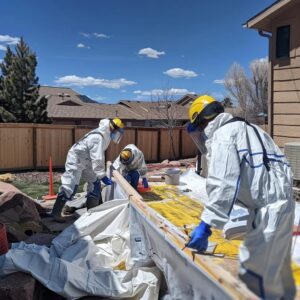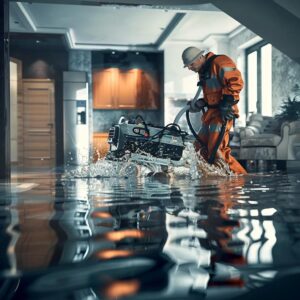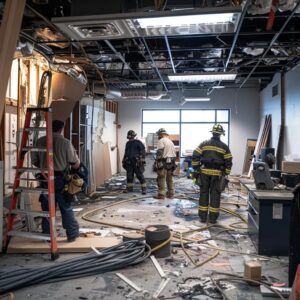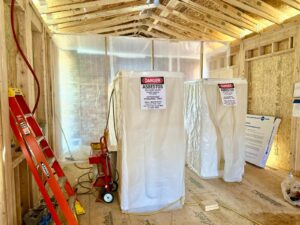Water damage can strike unexpectedly, turning homes and businesses upside down in mere moments. Whether it’s a burst pipe, a roof leak, or an appliance malfunction, the first moments after water damage occurs are critical in minimizing destruction. But what exactly should you do first?
Before diving into the process, let’s address an important question:
What is the meaning of water damage restoration?
Water damage restoration refers to the professional process of repairing and returning a property to its pre-damage condition after water intrusion. This includes water removal, drying, cleaning, sanitizing, and restoring damaged areas to ensure safety and livability.
When disaster strikes, knowing the essential first step in the water damage restoration process can make all the difference.
Understanding Water Damage and Its Risks
Water damage can originate from a variety of sources, including:
- Burst Pipes: Freezing weather or corrosion often leads to pipe failure.
- Flooding: Heavy storms and natural disasters can cause significant water intrusion.
- Appliance Leaks: Malfunctioning washing machines, dishwashers, or water heaters.
- Roof Damage: Holes or missing shingles allow water to seep into your home or business.
The Risks of Delaying Action
Delaying action after water damage can lead to compounding issues, such as:
- Structural Damage: Water weakens walls, floors, and the foundation, requiring extensive repairs.
- Mold Growth: Mold can develop within 24-48 hours of water exposure, posing severe health risks.
- Electrical Hazards: Water exposure to wiring and appliances increases the risk of fire or injury.
These risks highlight why emergency water damage restoration is so vital.
Advanced Considerations in Water Damage Restoration
What is a Class 3 Water?
When dealing with water damage, understanding the severity and classification is essential for effective restoration. One crucial concept is Class 3 water damage, which refers to situations where a significant amount of water has saturated an area, including ceilings, walls, and floors. This classification often results from overhead water sources like broken pipes or roof leaks. However, to fully grasp Class 3 water damage, it’s important to also consider the categories of water damage as defined by the Institute of Inspection, Cleaning and Restoration Certification (IICRC).
Categories of Water Damage
The IICRC classifies water damage into three categories based on the source and level of contamination:
- Category 1: Clean Water
- Originates from sanitary sources like rainwater, snowmelt, or leaking water supply lines.
- It poses no substantial risk to humans if addressed promptly.
- Examples include overflowing sinks or bathtubs without contaminants.
- Category 2: Gray Water
- Contains significant contamination and may cause discomfort or illness upon exposure.
- Sources include broken dishwashers, washing machines, or overflowing toilets with urine only.
- Requires complete disinfection of affected areas.
- Category 3: Black Water
- Grossly contaminated water that may carry pathogens, toxins, or sewage.
- Originates from sources like sewer systems, seawater, or river flooding.
- When it soaks into porous materials like unsealed cement or wood, extensive sanitization is required.
Class 3 Water Damage Explained
Class 3 water damage doesn’t necessarily refer to the contamination level (as in the categories above) but rather the saturation and extent of the water intrusion. It typically involves:
- Water saturation of ceilings, walls, and floors.
- Large volumes of water affecting multiple layers of materials.
- Extensive drying efforts requiring specialized equipment.
For instance, Category 3 (black water) can escalate to Class 3 damage if large quantities of it soak deeply into materials like sheetrock, flooring, or wood. This level of damage requires immediate professional intervention by water damage restoration pros.
Why Immediate Action Matters
Class 3 water damage poses serious risks, including structural instability and mold growth, especially when compounded by contaminated water. By understanding the categories and classes of water damage, homeowners and business owners can appreciate the critical role of emergency water damage restoration in mitigating water damage effectively.
For complex situations involving Category 3 black water and Class 3 saturation, the expertise of restoration professionals ensures thorough cleanup, safe mold remediation, and structural repairs. Always act quickly to prevent long-term consequences!
The Immediate First Step in Water Damage Restoration
Contacting Professional Restoration Services
The first and most crucial step is to contact professionals experienced in the water damage restoration process. Water damage restoration pros have the training and equipment needed to mitigate water damage, ensuring that your property doesn’t suffer further deterioration.
Key Qualities to Look For in a Restoration Team
- Licensed & Insured: Trust only restoration services from a licensed and insured general contractor.
- 24/7 Availability: Water damage doesn’t wait. Services offering emergency water damage restoration provide immediate relief.
- Comprehensive Services: From residential water damage restoration to commercial water damage restoration, professionals handle it all.
The Water Damage Restoration Process:
Step 1: Inspection and Damage Assessment
Professionals will inspect your property to evaluate the extent of water damage and determine the best course of action.
Step 2: Water Removal and Extraction
Using advanced pumps and vacuums, professionals provide 24/7 emergency water removal to eliminate standing water quickly.
Step 3: Drying and Dehumidification
High-powered dehumidifiers and air movers dry out affected areas to prevent mold growth and further damage.
Step 4: Cleanup and Sanitization
Technicians clean and disinfect surfaces to ensure a safe environment. This often includes crawl space mold removal and other mold remediation services.
Step 5: Restoration and Repairs
Restoration services may involve repairing or replacing drywall, flooring, and ceilings to restore your property to its original condition.
Why Acting Quickly Is Critical
The Cost of Waiting
- Repairs become more expensive as damage worsens.
- Mold growth and electrical hazards add to the complexity and risk.
Peace of Mind with Professional Restoration Services
Hiring a team that specializes in water damage cleanup services ensures your property is safe and secure.
Why Quick Action Matters
The first step in any water damage emergency is to act quickly by contacting professionals who specialize in the water damage restoration process. Whether it’s a need for residential water damage restoration, commercial water damage restoration, or flood recovery services, partnering with experts can save you time, money, and stress.
When disaster strikes, trust the best disaster restoration & cleaning company in Denver CO to handle the job. Their expertise in residential asbestos removal, mold remediation services, and 24/7 emergency water removal ensures a seamless recovery process.
Don’t wait—take the first step toward restoring your property today!








